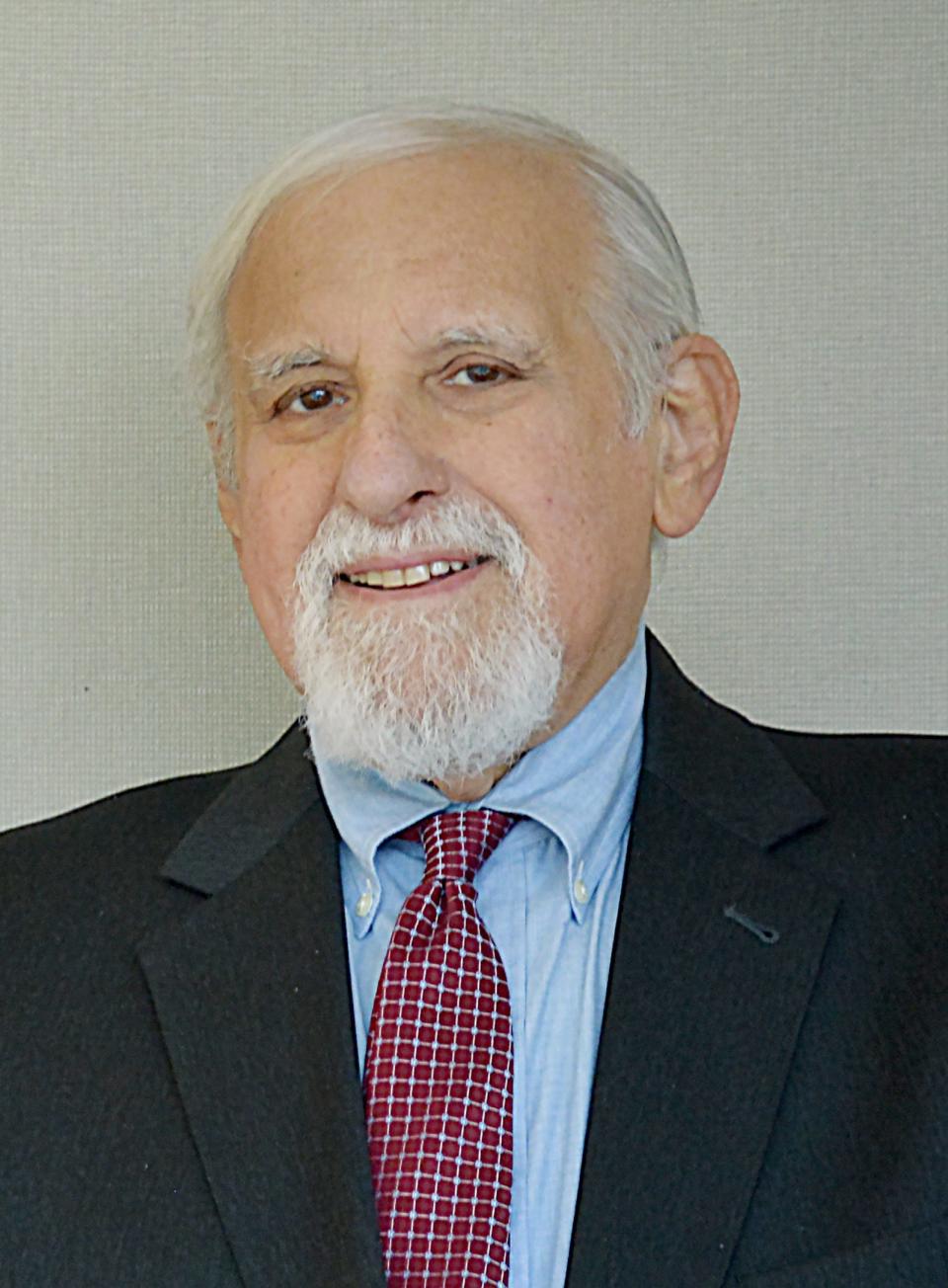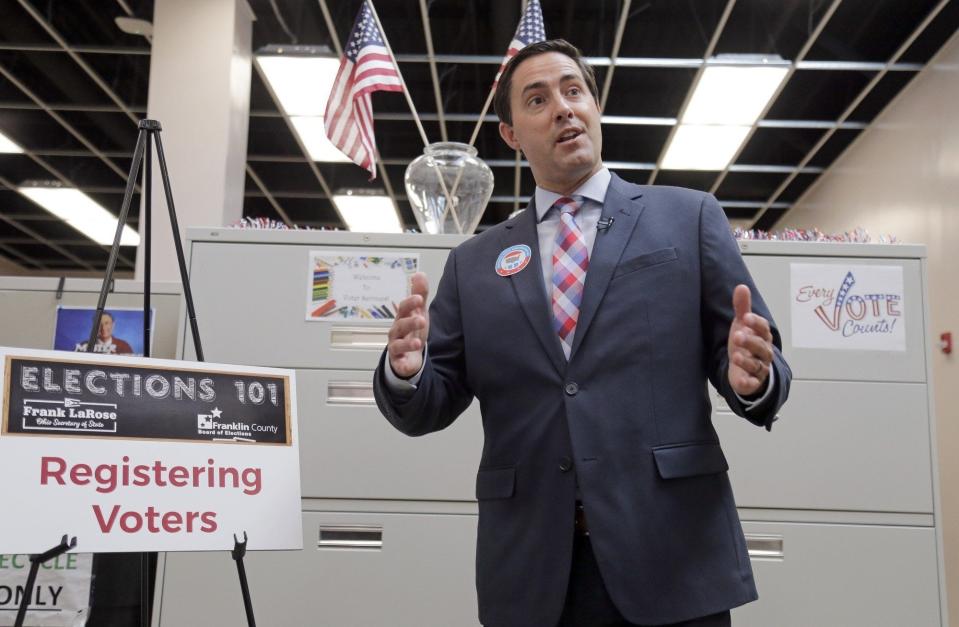Marcus Hanna and his epic clashes with Tom L. Johnson:
Podcast from the Music Box
2/29/2024
w/Ryan Chamberlain and Dr. John Grabowski
Category: Progressive Era: 1900-1920

THE GREAT AMERICAN PARADOX:
TOM L. JOHNSON AND THE CONTROVERSY
SURROUNDING HIS ROLE IN HISTORY
A Thesis
Presented in Partial Fulfillment of the Requirements
for the Degree Master of Arts
by
Eric Charles Lewandowski, A.B.
The Ohio State University
The Tom L. Johnson Testimonial Banquet, May 31, 1910
The Tom L. Johnson Testimonial Banquet, May 31, 1910
Program from the testimonial given for Tom L. Johnson on May 31, 1910 in New York City just prior to his death in 1911
Federal Reserve Bank of Cleveland celebrating 100th anniversary, Thursday August 10, 2023

A look inside the Federal Reserve Bank of Cleveland, August 8, 2023
Allison Sutkowy, Marketing Supervisor at the Federal Reserve Bank of Cleveland, explains the details and history of the original vault built by York Safe & Lock Company from York, Pennsylvania
Federal Reserve Bank of Cleveland celebrating 100th anniversary (photos from exclusive tour)
Cleveland.com, Thursday August 10, 2023
The link is here
Issue 1 aims at the heart of Ohioans’ citizen initiative powers. Here’s how we won them: Mike Curtin cleveland.com July 9, 2023
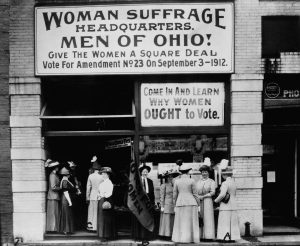
Issue 1 aims at the heart of Ohioans’ citizen initiative powers. Here’s how we won them
“As the stench of corruption worsened, Ohio produced more strong reform leaders than any other state. Most notable were the Rev. Herbert S. Bigelow of Cincinnati’s Vine Street Congregational Church, Cleveland Mayor Tom L. Johnson, the Rev. Washington Gladden of the First Congregational Church of Columbus, and Toledo Mayor Samuel M. “Golden Rule” Jones.”
by Mike Curtin
When she won the first national spelling bee, Marie C. Bolden dealt a blow to racism, NPR
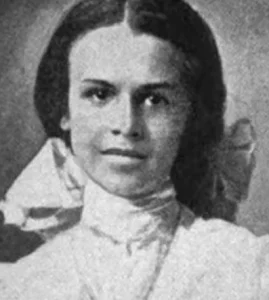
Marie C. Bolden made national headlines when she turned in a flawless performance at a spelling bee in Cleveland. Her competitors included white students from segregated school districts in the South.
Courtesy the Brown Family
If you haven’t heard about the Black girl who won the first national spelling bee in the U.S. 115 years ago, you’re not alone: even many in her family didn’t know about Marie C. Bolden’s feat until after she died, decades later.
“It’s astounding to me” that she never talked about winning a gold medal in front of thousands of people, Bolden’s grandson, Mark Brown, told NPR.
But back in 1908, Bolden’s victory made national news and upended racist stereotypes, less than 50 years after the Civil War. The 14-year-old did it by being perfect, spelling 500 words flawlessly to lead her hometown team, Cleveland, Ohio, to victory in the city’s then-new Hippodrome Theater.
“She never talked about this award, this amazing accomplishment,” Brown said. “But even Booker T. Washington mentioned [it] in his speeches.”
Bolden’s win was a national sensation
Boleden’s win was dramatic and unprecedented: Cleveland’s team was trailing in a field that included teams from New Orleans, Pittsburgh and Erie, Pa., near the end of the contest, according to contemporary accounts. But then Bolden vaulted her team to the top prize.
She never showed off the gold medal she won — in fact, her family isn’t sure what became of it — but in interviews after her win, Bolden told reporters she had studied hard for the competition, saying she wanted to help her city win, and that her mother and father wanted her to win.
“When I felt nervous at the Hippodrome, it steadied me to think of these things,” she was quoted telling The Plain Dealer. “I just kind of gritted my teeth and made up my mind that I wouldn’t miss a word.”
It was only after Bolden died that her family realized her place in history. Going through a box of her belongings, Brown says, they found a newspaper clipping from The Plain Dealer relating the story of the Black mail carrier’s daughter who out-spelled hundreds of white kids.
After her stunning victory, Bolden was hailed by “a storm of applause” and congratulations from hundreds of people, including members of the team from New Orleans, according to Indiana’s South Bend Tribune.
Bolden’s story has only emerged in recent years
Cleveland hosted the spelling contest in June 1908, using it as a marquee event to kick off the National Education Association’s conference. The contest is recognized as the first nationwide spelling bee by Guinness World Records — which also notes Bolden’s role.
The famous Scripps National Spelling Bee, which began in 1925, held its finals this week. Bolden’s accomplishment drew renewed attention in 2021, when Zaila Avant-garde became the first African American to win the Scripps contest.
Bolden’s story then drew the interest of Babbel, the language-learning software company, which contacted Brown after researching his grandmother’s win.
“Her parents and friends helped her memorize words, and she read a newspaper each day to perfect her spelling,” said Malcolm Massey, a language expert at Babbel. “It’s a blueprint for today’s would-be Spelling Bee champions.”
“Past Ohio lawmakers would turn in graves about proposed constitution changes” by Steven H. Steinglass
“Past Ohio lawmakers would turn in graves about proposed constitution changes”
by Steven H. Steinglass,
Steven H. Steinglass is dean emeritus at the Cleveland State University College of Law

One hundred ten years ago, 119 delegates met in Columbus for the state’s most important 20th century political event—the 1912 Ohio Constitutional Convention.
A broad array of interests supported the convention to overcome an unresponsive General Assembly. They included the Direct Legislation League, organized labor, municipal home rule supporters, the Ohio State Board of Commerce, liquor interests and the Ohio Woman Suffrage Association.
To avoid a repeat of 1874, when voters rejected a new constitution, the 1912 Convention proposed 42 amendments; voters approved 34 of them.
The most important of the approved amendments involved direct democracy, which includes the constitutional initiative, the statutory initiative, and the referendum.
Ohio’s constitutional initiative permits filing a petition with valid signatures equaling at least 10 percent of the votes cast in the last gubernatorial election. A proposed amendment then is placed on the fall general election ballot. A majority vote puts it in our constitution.
Ohio and all but two of the 18 states with the constitutional initiative require only a simple majority vote to approve amendments, although three states have very limited supermajority requirements for tax increases, amendments to the legislative article, and proposals to increase the vote to approve amendments.
This guest column is available free: Support the exchange of local and state ideas by subscribing to the Columbus Dispatch.
From 1851 to 1912, Ohio had a supermajority requirement for amendments proposed by the General Assembly. Such amendments, unlike those proposed by conventions, needed a majority of the total votes cast at the election. This policy was a disaster, and 19 of the 26 amendments proposed by the General Assembly but rejected by the voters received more yeas than nays.
The 1912 Convention reformed the process by proposing not only the constitutional initiative but also the elimination of the supermajority requirement; and the voters approved these changes.
Ohio voters have been selective in deciding which amendments to approve. Since 1912 they have approved only 19 of 71 amendments proposed by citizens (27 percent) while approving 108 of 156 proposed by the General Assembly (69 percent).
Secretary of State Frank LaRose now proposes abandoning Ohio’s 110-year tradition of respecting simple majority rule.
His proposal, House Joint Resolution 6, requires amendments proposed by citizen petitions to obtain a 60 percent supermajority vote.
The LaRose proposal would cause the 1912 delegates to turn in their graves. The very purpose of the direct democracy amendment was to allow Ohio’s citizens to bypass an unresponsive and often unrepresentative General Assembly.
LaRose notes that the General Assembly must achieve a three-fifths vote to place a proposed amendment on the ballot.
He then suggests that his proposal somehow levels the playing field. But the 60 percent requirement adopted in 1851 sought to limit the power of the General Assembly, whose abuse of power under our first Constitution contributed to the need for the state’s 1850-51 Convention.
Without evidence, he also argues incorrectly that the initiative is responsible for the length of Ohio’s almost 60,000-word constitution.
Even more bizarrely, he claims out-of-state interests are responsible for abuse of the initiative, and that a 60 percent requirement will encourage amendment proponents to be less partisan and to make alliances.
To add a non-partisan gloss to his proposal, LaRose claims that nine red and blue states have supermajority requirements for citizen-proposed constitutional amendments.
This is misleading. Indeed, even a cursory review of the policies in the states that he identified shows that only Florida actually has a supermajority requirement for all constitutional amendments proposed by initiative.
LaRose and his allies are moving quickly without respect for 110 years of precedent and without the care that should precede any effort to amend Ohio’s foundation document.
Conscientious Ohioans should conclude that LaRose’s proposal is a rushed, poorly researched, and cynical attempt to undercut proposed amendments expected to appear on the ballot over the next two years––proposals to create an independent redistricting commission, raise the minimum wage, and protect the reproductive freedom and health of Ohio’s women.
Steven H. Steinglass is dean emeritus at the Cleveland State University College of Law, where he has taught, lectured, and written about the Ohio Constitution for more than three decades. From 2013 to 2017, he served as the Senior policy advisor for the Ohio Constitutional Modernization, and he is the co-author of “The Ohio State Constitution (Oxford University Press).”
This article originally appeared on The Columbus Dispatch: Opinion: What would be impact of House Joint Resolution 6?
Steven H. Steinglass is dean emeritus at the Cleveland State University College of Law, where he has taught, lectured, and written about the Ohio Constitution for more than three decades. From 2013 to 2017, he served as the Senior policy advisor for the Ohio Constitutional Modernization, and he is the co-author of “The Ohio State Constitution (Oxford University Press).”
“A Man is Passing” Poem written on the death of CLE Mayor Tom L Johnson 1912 by Edmund Vance Cooke
A man is passing: Ode to Tom L Johnson by Edmund Vance Cooke (1912)
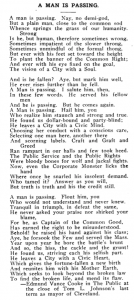
Garrett A. Morgan, Cleveland’s ‘Black Edison,’ created today’s traffic light and gas mask by Brenda Cain, Plain Dealer, Feb 4, 2022
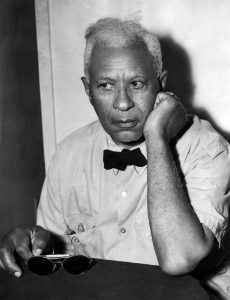
Tom L. Johnson’s Tax School: The Fight for Democracy and Control of Cleveland’s Tax Machinery by Andrew L Whitehair
Tom L. Johnson’s Tax School: The Fight for Democracy and Control of Cleveland’s Tax Machinery
by Andrew L Whitehair, 2020, Master of Arts in History, Cleveland State University, College of Liberal Arts and Social Sciences.
Prior to Tom L. Johnson’s election to mayor of Cleveland in 1901, the city’s tax system was rife with inequality. Johnson sought to correct these inequalities by democratizing Cleveland’s tax system. To accomplish this aim, he established a new department in City Hall, called the “tax school,” which was designed to educate Clevelanders about the existing tax system’s failures as well as Johnson’s proposed solutions. The tax school worked to improve the tax assessment process by implementing a scientific approach, improving transparency, and soliciting citizen input. Johnson’s efforts, however, met with resistance from an entrenched business elite that employed the state legislature and courts to destroy Johnson’s tax school. Through political campaigns of misinformation, usurpation of the primary process, and stuffing key tax institutions with friendly partisans, these business elites conspired to control the tax machinery of Cuyahoga County. This study of Johnson’s efforts to democratically reform Cleveland’s tax system reveals how the city’s business elite colluded to destroy the tax school and to retain the levers of tax power. In providing the canonical account of Cleveland’s tax school, I situate the history of the tax school within a multi-party negotiation governed by unequal power relationships between business elites and the rest of society. The wealthiest Clevelanders possessed the greatest access to the tax system, and they used that access to rig the system in their favor.


